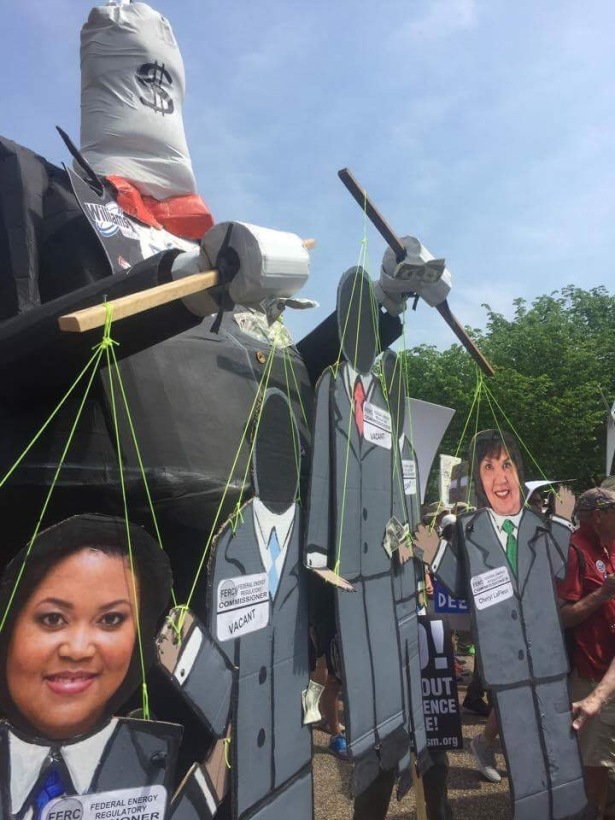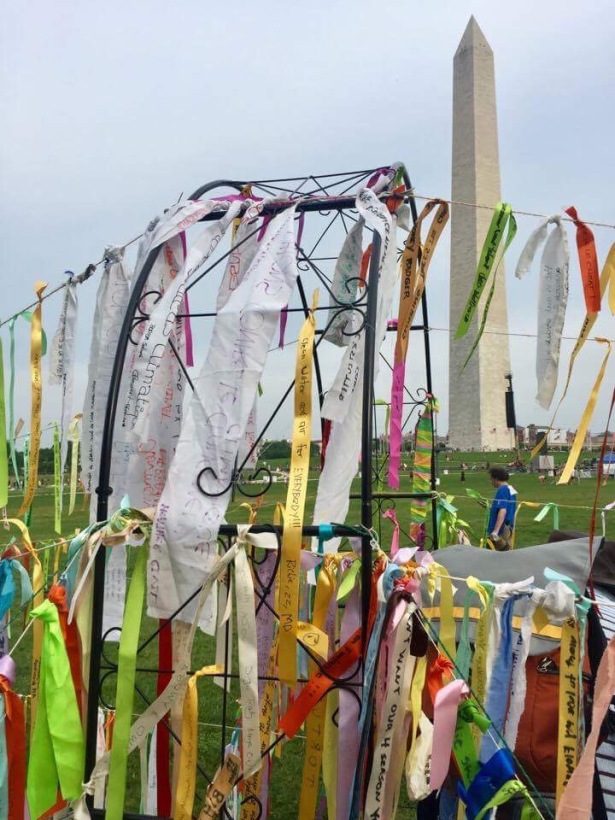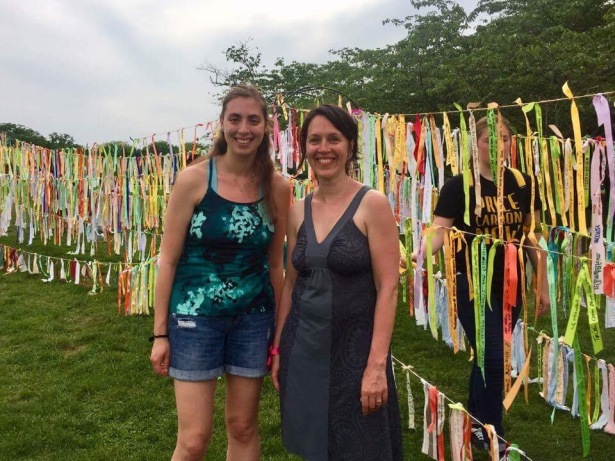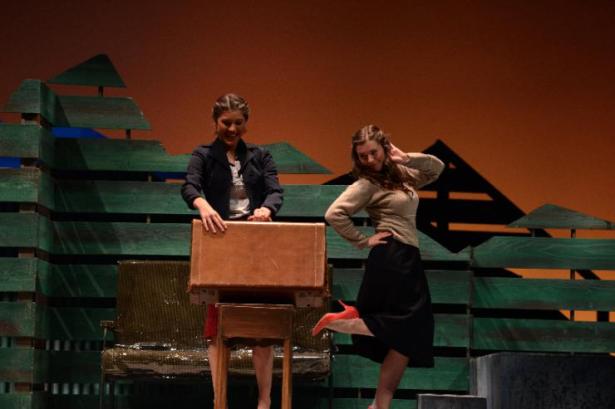This post comes to you from EcoArtScotland
It was a seemingly unlikely pair forming the panel after the Crypic Nights premier of The Same Hillside at the Centre for Contemporary Art in Glasgow. The one who looked like a farmer (checked shirt and flat cap) was the documentary film-maker John Wallace, the other (long hair and beard a t-shirt with a ‘pirate’ skull and crossbones) was soil scientist and a co-author of International Panel on Climate Change (IPCC) reports Professor Pete Smith.* This art science collaboration has been going on for some years now and The Same Hillside is the third piece of work to result from this ongoing partnership. It’s interesting because there are several other on-going relationships between artists and natural and social scientists in Scotland at the moment, many focused upon land use, social impact and critical environmental change.
The Same Hillside is an immersive installation with projections on three screens as well as the floor, and a sound installation in the foyer. If I tell you it is an exploration of the landscape through the lens of Ecosystems Services (this is an extension of ideas about nature as capital, something with social and economic value) you might think it belongs on the Open University YouTube channel rather than in an arts centre. You couldn’t be more wrong.
John Wallace described his interest as a documentary film-maker in finding structures or lenses external to himself to use in constructing his work. These ‘constraints’ are devices John Wallace uses to clarify his current inquiry and focus upon what interests him. It forces him to follow other lines and explore subjects he might not otherwise take up on his own. Hearing Pete Smith talking about Ecosystem Services Assessment (a method of assessing the services that aspects of an ecosystem provides to human society) and the aspects of land-use that this reveals, John Wallace saw potential for a way to explore and make strange again a landscape with which he was deeply familiar. This was a chance to see with fresh eyes.
It isn’t common knowledge, but three major Scottish rivers flow from one hillside in the South of Scotland to opposite sides of the country: the Annan into the Solway Firth, the Clyde through Glasgow into the Firth of Clyde, and the Tweed into the North Sea. With this in mind, Pete Smith and John Wallace defined a 20 mile radius ‘study area,’ that worked from the common ground at the top of these three watersheds. The questions they wanted to explore revolve around the ways that these networks of land and water delight and serve human communities.
Wallace set out to explore different aspects of these ecosystems in relation to the ‘services’ provided to human society. Ecosystems provide natural products and raw materials such as food, wood and water, when intact and healthy they regulate flooding process, turn carbon dioxide into oxygen, they support us by recycling nutrients and enabling pollination. The Cryptic Nights information sheet notes,
“The area is home to five drinking water reservoirs, over 300MW of installed wind capacity, the West Coast Main Line, 400kV power transmission lines, the M74 motorway, thousands of acres of commercial forestry, hill farms, salmon redds, blanket bogs, and rare and delicate subalpine habitats.â€
Ecosystems also provide aesthetic, biodiversity and spiritual services, a set of cultural interrelationships that have proven more difficult on to which to put economic value.
As a documentary film-maker John Wallace sought out the human stories which reveal deep and complicated relationships, a lifetime of meaning. Whether that’s the train driver talking about the impact of one 40-car supermarket haul and how many trucks that takes off the road, or the modern Saw Mill that uses the waste material to generate energy. John Wallace’s style is not interrogative or even prodding. So it is interesting when climate change keeps coming up in different narratives. It’s clearly an essential part of the reality for a wide range of people living, working and managing transport in the Scottish landscape.
Whilst ‘place’ as a vital facet of identity has been a signal thread in Scottish art-making for at least a generation, it usually focuses on a recognisable place. The Same Hillside focuses on a part of the country that supports a lot of other ‘places’, the towns and cities downstream. It embeds a bioregional or watershed-based approach: Dumfries, Glasgow, Berwick and all the other settlements on the Annan, Clyde and Tweed are all dependent on the health and viability of this upland territory.
John Wallace’s interviews with people living and working in this place focus upon the production and transmission of energy; the transportation routes; the scale of commercial forestry and the range of resulting products, the value of the peatland in sequestering carbon, as well as a means of provisioning game for hunting sport. The last scenes follow a group exploring the Spring at Hartfell as a specific example of the cultural and spiritual dimension of the landscape.
Underlying John Wallace’s sensitive handling of people and landscapes are the sorts of data sets that Pete Smith works with. Where the films on the screens take our conscious attention with stories, the data projected on the floor is telling another story, of car and truck movements on the M74, of rainfall, of the monitoring of land-use.
What is apparent watching The Same Hillside is that some bad decisions have been made in this landscape in the past – planting commercial forestry on the best farmland and draining the peat for grazing are two striking examples. After hearing about healthy watersheds with forest cover it was curious to look at images in the closing minutes. The last shot features long views from the hilltop down through the valley where there is hardly a tree to be seen. Here, water is sacred and aesthetics is provided by nature. Nature necessitates a healthy highland and stream corridor with plants and trees to regulate flow and temperature allowing for best conditions for all living things. Is the spirit in place, without its animating forces?
The Same Hillside (and the earlier works Cinema Sark and Sark-Tweed) don’t fit into existing categories of documentary film or installation art. They draw on languages of place and site-specificity, but also, albeit quietly, of everyday activism. They speak to the Anthropocene, that humans are affecting everything, without ever mentioning the term. The sawmill using its own waste product to generate energy is a form of attention to process, which goes beyond everything being focused by ‘the product’.

We need more productive partnerships between people like Professor Pete Smith and John Wallace – processes that extend beyond a project into a long term dialogue, interactions between those who work with data and inform policy, and those who work with sound, image, form and narrative. These connections with the artists and film-makers draw the sciences into the everyday of a critically positioned arts practice. Working across disciplines can challenge assumptions and lead to the emergence of new forms.
With thanks to Tim Collins for his comments and suggestions.
* The partnership between Wallace and Smith started during Do Not Resuscitate a series of events organised by Mike Bonaventura, then CEO of the Critchon Carbon Centre. Do Not Resuscitate brought together artists and scientists, drawing on the Scottish Government’s Strategic Research Programmes. The first piece of work resulting from this collaboration was Cinema Sark (2013), presented as part of the Environmental Art Festival Scotland, and focusing on the River Sark which is the boundary between Dumfries & Galloway and Cumbria, between Scotland and England. Wallace and Smith’s partnership isn’t the only significant outcome of Do Not Resuscitate – it contributed to the shape of the Environmental Art Festival Scotland and led to a residency programme Nil by Mouth.
About EcoArtScotland:
ecoartscotland is a resource focused on art and ecology for artists, curators, critics, commissioners as well as scientists and policy makers. It includes ecoartscotland papers, a mix of discussions of works by artists and critical theoretical texts, and serves as a curatorial platform.
It has been established by Chris Fremantle, producer and research associate with On The Edge Research, Gray’s School of Art, The Robert Gordon University. Fremantle is a member of a number of international networks of artists, curators and others focused on art and ecology.














